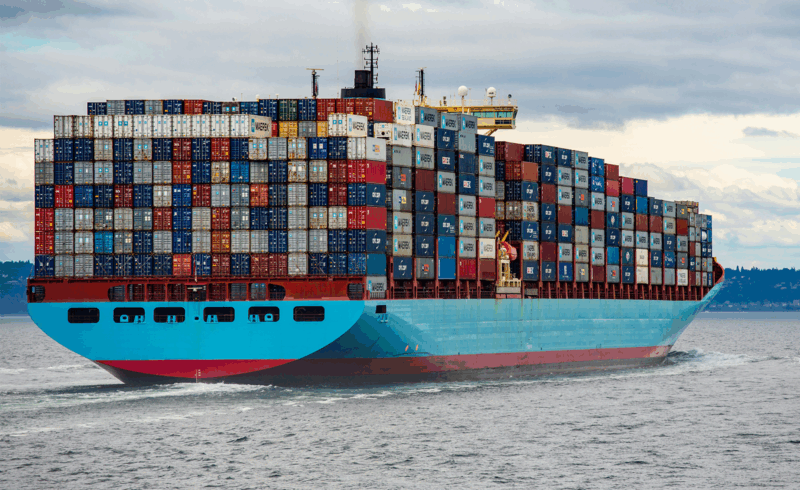We first established our office in Mexico City in 2015 as a gateway to Latin America.
Since then our network and knowledge of the region has grown immeasurably, providing our colleagues, candidates and clients with career possibilities. We’ve never seen such a dynamic market as today with an abundance of opportunities, however, with any opportunity comes challenges, particularly related to talent acquisition and retention – something Proco Group has positioned itself perfectly to support.
20+ years ago, China and other Pacific rim countries were considered global manufacturing hubs. It made economic and competitive sense to offshore in one of these countries, as production costs were so low that they offset the added costs of doing international business. However, conditions have been changing recently, and many businesses are now looking to bring their supply chain close to home.
In 2023 Deloitte released a report on nearshoring in Mexico, highlighting it as an emerging trend for businesses looking to move production closer to consumers, reduce costs and avoid logistical setback.
It can be argued, however, that nearshoring is not really a new trend, as Mexico was able to grow its exports from 6-11% between 1994 and 2000 based on its dealings with the North American market.
What’s clear is that nearshoring in Mexico continues to increase in popularity in 2024. In this article I explore the current state of play, the benefits of nearshoring and the current challenges nearshoring in Mexico presents.
The Tesla effect (and other big moves)
In early 2023 Elon Musk confirmed plans to build a “gigafactory” in Mexico; an investment that Mexico’s government says would total approximately $5 billion. Towards the end of the year Musk seemed to backpaddle on the timeline saying that, due to a more uncertain economy, he wasn’t ready to go “full tilt” with the gigafactory in Mexico.
Although the gigafactory is yet to appear, it looks like Musk is still planning on nearshoring in Mexico, as he invited several of Tesla’s supplier to nearshore in the country.
42 other companies did make the move in 2023, however, absorbing a total of 4.72 million square feet in the industrial markets of Monterrey, Querétaro, Tijuana and La Laguna. These companies include:
- Walmart
- Aptiv
- Schneider Electric
- Unison
- DHL
Asia has also taken an active interest in nearshoring in Mexico, in part due to the geopolitical conflict between China and the USA, with more than 3,000 Asian companies establishing themselves in Mexico in 2023 alone. Leading the movement with an investment of $8,143 million is China and following them is South Korea with an investment of $3,746 million dollars.
The opportunity to bolster Mexico’s economy through nearshoring
Recent research from the Mexican Institute of Competitiveness found that foreign investment because of supply relocation to Mexico grew 47% during the first 9 months of 2023. If Mexico taps into the opportunities presented by nearshoring, the economy will benefit significantly. According to a recent Deloitte report:
- Foreign direct investment could add an additional 0.5 percentage point to Mexico’s GDP
- An extra 2.4 percentage points could be added to GDP from manufacturing output
- Approximately 1.1 million additional jobs could be created, which could support almost 2% of the adult population.
Nearshoring has been high on the agenda during recent presidential debates in Mexico, with each candidate sharing specific proposals on how to optimise the increased business interest.
Why Mexico, why now?
To start, the tariffs imposed on China by the United States have resulted in businesses looking for alternative, more cost-effective markets to manufacture in.
As well as sharing a land border with the United States, Mexico also benefits from tariff exemptions from USMCA (United-States-Mexico-Canada Agreement) – the free trade zone that was established in 2020 between the three countries. Border crossings by truck offer help to establish a more reliable – and often shorter – supply chain.
COVID-19 also played a role in the move. With global borders closing, delivery times and availability of goods were affected – and at a time when demand for products increased drastically.
Mexico is also accessible by sea from both Europe and Asia, and both routes are less exposed to the geopolitical and climate-related issues that are impacting Egypt’s Suez Canal and the Panama Canal.
Additionally, nearshoring in Mexico enables companies to reduce costs. Labor costs in Mexico are approximately 20% lower than they are in the United States. Mexican labor has also been shown to outpace both the quality output and productivity rate of Chinese labor.
Mexico also has free trade agreements in place with over 40 nations around the globe, which means that inputs and exported product duties are often reduced or eliminated entirely.
Nearshoring in Mexico: a double-edged sword?
Whilst there are currently plenty of benefits to nearshoring in Mexico, it’s worth considering how long these will last. As more companies move production to the country, competition for space, talent and materials will only increase.
In fact, there’s already increased competition for industrial space in Mexico, which is driving up costs. The Mexican Chamber of the Construction Industry found that the price of cement and reinforced steel increased drastically by up to 25% between the end of 2021 and mid 2022.
Land costs are also surging. Since March 2023 when Tesla announced plans to build a factory in Santa Catarina, the price of land has increased by 25%.
Wages are also increasing. At the start of 2024 minimum wage increased by 20% to $22 for jobs near the northern border. The rest of the country also saw an increase in the minimum wage to $14.50.
With interest in nearshoring in Mexico gradually increasing, companies considering moving their supply chain to the country might want to do so sooner rather than later. Costs are still low enough to be considered beneficial, and competition is yet to peak.
Perfectly placed to navigate nearshoring
Proco Group’s dedicated team in Mexico are experienced in sourcing exceptional supply chain talent and delivering comprehensive benchmarking and competitor analysis.
We’ve partnered with a number of companies to support nearshoring in Mexico. Our work includes the delivery of a robust analysis of the talent landscape within the EV market for an automotive OEM, which helped our client define the right organizational structure, a competitive compensation structure and the right talent acquisition strategy.
We’ve also partnered with a consumer company to launch their newly created Global Procurement Excellence Hub, using our executive search solution to source top talent into a number of leading roles in their organizational structure. Alongside this we delivered a regional talent map that spans the entire LATAM region, enabling our client to select candidates with the most robust experience in strategic procurement.
To speak to a member of our team about nearshoring in Mexico and its associated talent requirements, click here.




